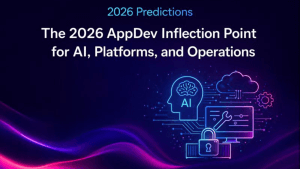The News
At the 2025 .NEXT Conference, Nutanix and Pure Storage announced a strategic partnership to deliver a deeply integrated infrastructure solution designed for mission-critical workloads. This integration combines Nutanix Cloud Platform with Pure Storage FlashArray over NVMe/TCP to provide a modern, scalable, and secure environment ideal for high-performance virtual workloads, including AI. Read the original press release here.
Analysis
The application development market is facing a critical inflection point. Developers are increasingly challenged to support workloads that are both data-intensive and latency-sensitive — especially in the AI and edge computing space. According to Paul Nashawaty, Principal Analyst at theCUBE Research, enterprises are under pressure to modernize their infrastructure while balancing operational complexity and cost. As VMware market uncertainty lingers, Gartner projects 70% of enterprise-scale VMware customers will migrate at least 50% of workloads by 2028. This growing demand for alternatives opens the door for infrastructure solutions that emphasize flexibility, performance, and built-in resilience — three pillars this new Nutanix-Pure Storage collaboration targets directly.
Implications of the Nutanix–Pure Storage Announcement
This joint solution introduces a highly optimized infrastructure stack for application teams managing mission-critical workloads. Developers now have a vendor-agnostic alternative that blends Nutanix AHV and Flow technologies with Pure’s FlashArray NVMe/TCP architecture, enabling near real-time data access, cyber-resilience through SafeMode, and simple orchestration for complex deployments. As Nashawaty notes, “Developer-centric infrastructure must now prioritize seamless integration, operational transparency, and resilience at scale” — criteria that this collaboration aims to meet. Furthermore, support across major OEM vendors like Cisco and HPE makes this solution highly adaptable in diverse enterprise environments.
How Developers Handled These Challenges Before
Historically, developers managing mission-critical applications had to rely on legacy virtualization platforms — often tied to rigid licensing models and expensive storage architectures. Infrastructure decisions were frequently dictated by vendor lock-in, complex configuration overhead, and limited support for modern workloads like AI and analytics. Many teams resorted to siloed tools for compute and storage, often resulting in latency issues, increased costs, and maintenance complexities. These constraints not only slowed time-to-market but also created friction across DevOps and ITOps functions.
What This Means for Developers Moving Forward
With the Nutanix–Pure Storage solution, developers gain an integrated, API-accessible environment capable of delivering consistent performance across compute and storage layers. NVMe/TCP ensures low-latency access to data, while Nutanix Flow enhances network micro-segmentation — key for secure application delivery. This alignment of modern storage and compute architectures empowers teams to build and scale applications more rapidly, with fewer architectural trade-offs. Developers can now shift focus toward feature delivery and innovation, rather than platform maintenance or vendor negotiations.
Looking Ahead
The infrastructure market is poised for rapid transformation. As virtualization becomes increasingly abstracted and workload demands continue to climb, developer-first infrastructure models will dominate. The focus will shift toward composable architectures, automated orchestration, and full-stack visibility — aligning well with emerging trends in AI-native and edge applications.
This Nutanix-Pure Storage partnership marks a step in that direction. By enabling a scalable, secure, and agile infrastructure platform, they position themselves as a compelling option for organizations rethinking their application strategies post-VMware. If early access results prove successful, expect broader adoption by year-end and additional integrations — particularly in the areas of observability, container orchestration, and AI pipeline management.



